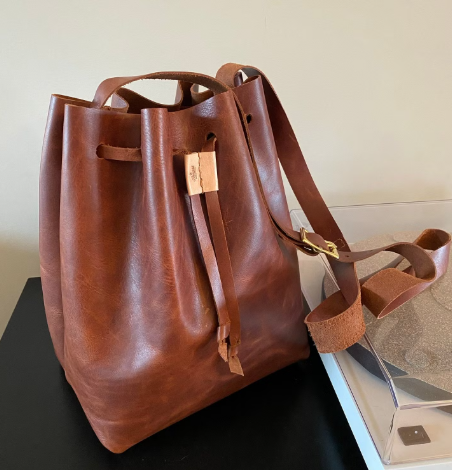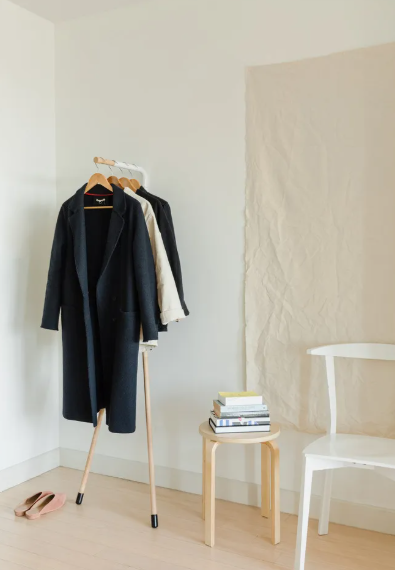
The Ultimate Guide to Transitioning Your Wardrobe from Fall to Winter
As the crisp air of fall gives way to the cold of winter, it’s time to make sure your wardrobe is ready for the season ahead. Transitioning your wardrobe is not just about switching clothes, it’s an opportunity to refresh, declutter, and ensure your winter essentials are organized and properly stored. Here’s how to effectively make the switch from fall to winter.
Why Seasonal Wardrobe Transitions Matter
Changing your wardrobe seasonally isn’t just about swapping out clothes. It’s a great chance to assess what fits, what’s still in good condition, and what needs to be repaired or replaced. Transitioning your wardrobe helps you stay organized and ensures that your clothes are preserved properly. If not stored correctly, garments can suffer damage from moisture, pests, or improper folding, making them unwearable by the time you need them again.
Sort and Declutter Your Fall Wardrobe
Start by going through your fall clothes and deciding which items to keep, store, or donate. This is your chance to eliminate anything that no longer fits or hasn’t been worn in a while.
- Keep: Items that you can still wear through the winter, such as leather jackets or layering pieces that are versatile across seasons.
- Store: Fall-specific clothes like light cardigans or ankle boots should be stored until next year.
- Donate or Sell: If you have pieces that you haven’t worn in ages or that no longer fit, now is the time to part with them. This will free up space for the new season’s wardrobe.
While sorting, make note of any items that may need cleaning or repairs. Take care of these before storing to avoid damage over time.
Preparing Your Winter Essentials
Once you’ve sorted your fall wardrobe, it’s time to get your winter essentials ready for the season. These are the pieces that will keep you warm through the cold months, so it’s important to inspect them and ensure they’re in good shape.
- Coats and Jackets: Whether it’s wool, down, or another insulated material, check for any wear or tear, particularly around the seams, zippers, and buttons.
- Sweaters and Knitwear: Wash or dry-clean wool and cashmere items before wearing them. Use a fabric shaver to remove any pilling and keep them looking fresh.
- Thermal Layers: Long-sleeve shirts, base layers, and leggings are essential for layering, so make sure they’re clean and ready to go.
- Winter Accessories: Check gloves, scarves, and hats for any damage, and clean them before use.
Winter clothing can take up more space, so make sure your closet is ready to accommodate bulkier items. Store heavier coats and jackets on sturdy hangers, and fold knitwear carefully to prevent stretching.
Storing Your Fall Clothes Properly
Once you’ve sorted your fall wardrobe, it’s important to store the items you won’t need for a while correctly to keep them in good condition. Here’s how to store them properly:
- Clean Clothes First: Always wash or dry-clean items before storing. Dirt and oils can attract pests and cause fabric deterioration. Make sure clothes are completely dry to prevent mildew.
- Use the Right Containers: Opt for breathable storage solutions like fabric bins or cotton garment bags. Avoid plastic, which can trap moisture and lead to mold. If using plastic, include moisture absorbers like silica gel packets.
- Proper Folding: Fold clothes carefully to prevent deep creases. Use tissue paper for delicate items to protect them from sharp folds, and store heavy fabrics like jeans or wool pants flat to maintain their shape.
- Protect Against Pests: Moths are a common problem for wool and silk garments. To prevent damage, use cedar blocks or sachets in your storage. These natural repellents are effective and help avoid the chemicals found in traditional mothballs.
By following these steps, your fall clothes will be safe and ready to wear when the season changes again.
Organizing Your Closet for the Winter Season
With your fall wardrobe stored and winter clothes ready, it’s time to reorganize your closet to accommodate the colder months. An organized closet makes it easier to find what you need when the temperatures drop.
- Prioritize Accessibility: Place your most-used items, such as coats and sweaters, in easy-to-reach areas. Items you use less frequently can be placed higher up or deeper in the closet.
- Utilize Vertical Space: Winter clothes can be bulky, but using vertical space can help save room. Hang coats and jackets on sturdy, non-slip hangers, and use bins for scarves, gloves, and hats.
- Group by Category: Organize similar items together—sweaters in one section, outerwear in another, and thermal layers neatly stacked. This makes finding outfits much quicker.
- Use Drawer Dividers: Small winter accessories like gloves and hats can get easily tangled. Use dividers to keep these items organized and easy to access.
Caring for Winter Fabrics Like Wool and Cashmere
Winter fabrics like wool and cashmere require special care to keep them in good condition. These materials can last for years with proper maintenance.
- Hand-Wash or Dry-Clean: Wool and cashmere should be handled with care. Either hand-wash them in cold water with a gentle detergent or take them to the dry cleaners.
- Use Fabric-Friendly Tools: Invest in a fabric shaver for removing pilling and a lint roller to keep these fabrics looking their best. Be gentle to avoid damaging the fibers.
- Proper Storage During the Season: Even when in use, wool and cashmere need to be stored properly. Fold sweaters to avoid stretching, and use sturdy hangers for coats to maintain their shape.
Quick Tips for Maintaining Your Winter Wardrobe
Once winter is in full swing, it’s important to stay on top of your wardrobe’s care to keep your clothes in good condition all season long.
- Rotate Your Clothes: Don’t wear the same sweater or coat every day. Rotating between different items prevents excessive wear on any one piece.
- Mid-Season Refresh: About halfway through the season, take some time to check on your winter wardrobe. Reassess what’s working, clean any pieces that need refreshing, and reorganize if necessary.
- Prep for Long-Term Storage: As the season comes to an end, clean and store your winter garments properly for the next year. Use breathable containers and take precautions against pests and moisture.
By following these tips, you’ll be able to enjoy a well-organized, properly maintained winter wardrobe that will last for many seasons to come.






